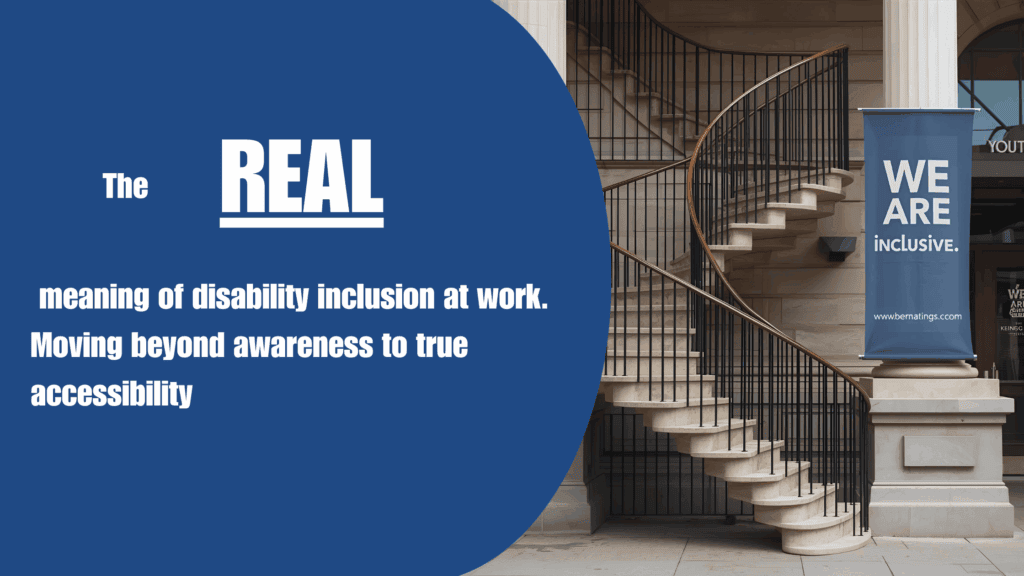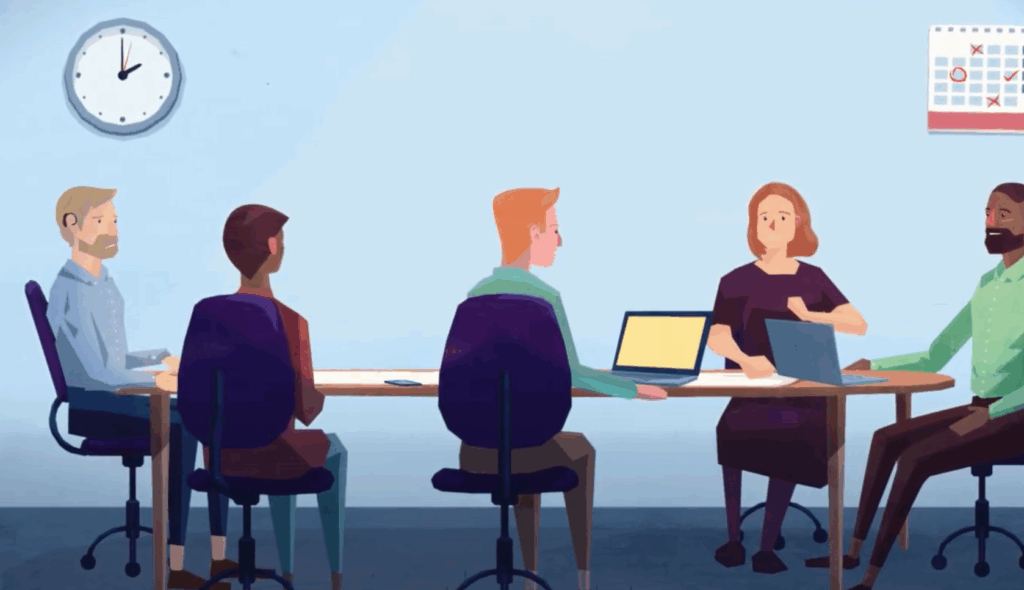Many of these strategies have been very successful. These have included:
- Centralising the funding pot for reasonable adjustments. Enabling managers to concentrate on what is needed for a disabled employee to achieve. Instead of considering how this will fit into their budget.
- Continuous line manager training for new recruits.
- EIAs completed for every new process or policy introduced. Limiting the risk of inequitability.
The one thing that always works is when a company develops its culture from the top down. Continuously demonstrating it will not accept anything but the standards it sets for true inclusion and equality.
Unfortunately, there’s no quick fix although there are some quick wins. So, in this blog, we will explore how a culture which centres disability inclusion is built and sustained.
Understanding your why
I know I bang on about this all the time. But this is because it’s so important. If you don’t understand why you’re doing something, you won’t prioritise it. It will quickly go to the bottom of the to-do list. Consider the Eisenhower Matrix:
Without defining the reasons why, disability inclusion will quickly fall to the not important, not urgent category.
The good news is that coming up with your why is not something you need to do or even should do alone. Involving your workplace, your ERGs or disability networks, utilising those annual staff surveys, and asking for general feedback are always in which you can start to gather ideas that will develop your strategy.
You may not be surprised to hear that Celebrating Disability can help with this as well.
Our guest talks give opportunities for participants to share their feedback in anonymous way so that they always remain psychologically safe and in control of those thoughts and ideas. At the same time, learning something new and solution focused to implement into their workplace.
We have also worked in the past with organisations to develop content with the ERGs, disability networks and people that are immediately affected by the outcome.
However you do it, remembering the following is key:
- People will only share if they understand why you are asking. I’ve mentioned twice now about psychological safety. And this is because this is key. If people don’t feel safe to answer the question, they won’t engage. It is imperative that it is articulated why you are asking, what you were going to do with the information and how people will be fed back to.
- Understand what you were asking. Define what you want to know the answer to. If it’s more than one thing, that’s okay but try and separate them out. The more you can communicate what you want to know, the more people can help you answer the question. Open questions can work but it’s still important to understand what the aim of asking that question is.
- It is not a once and done. But rather a rinse and repeat. Meaning you don’t just ask a question once and then stick with the solution for evermore. You use that for your jumping off point but you can refine and revisit regularly.
Keep in mind that they may be many different reasons for why disability inclusion is a good idea. This can include the morality case for disability inclusion but it may also include the business and commercial case. There’s nothing wrong with this.
Personally, I spent years avoiding the commercial case for disability inclusion. Over the last couple of years, I’ve come to realise that there’s nothing wrong with that: we as disabled people want to have a positive impact on society in the economy and one does not work without the other!
Assessing where you are
Now that you understand your why, it’s time to assess where you are against where you want to be. This may include a gap analysis assessment or desktop audit. This can be done internally or externally.
You may even want to do an access audit. This is looking at your physical environment to understand where the barriers are to achieving your why from a built environment perspective.
Your gap analysis assessment (or desktop audit) should include:
- Opportunity for key stakeholders to share their views.
- Surveys for employees to share their opinions and views.
- An analysis of how your policies, processes, templates, guidelines and any other documents enable or restrict how you will achieve your goal.
Done well and thoroughly, this assessment will give you a priority list to start.
Obviously, depending on where you are at the end of your gap analysis assessment (desktop audit), this will determine your next steps. So from now on, I will talk about some general strategies that will ensure disability inclusion is a systemic priority for your business.
Reasonable adjustments
Adjustments really are the key to success. The process for these can be as arduous or as simple as you would like to make them.
A personal tail
I am a member of a business mentoring group. This is a small business where they focus on enabling business owners to succeed. The ethos of inclusion comes naturally to this business. However, the implementation isn’t always obvious. What is clear is their commitment in making me feel valued and included in every activity that I take part in. The business makes this easy by having open conversations with me about what I need and how it can be implemented. This is an example of how it can be simple.
Depending on the size of the business, adjustments are easier or harder to get sign off on. But this is a process driven decision. If processes are open and fluid, it does not need to be difficult. An adjustment for a disabled person is the difference between successfully being productive as well as being part of the workplace culture and not. It’s a simple as that.
Systems for adjustments
Disabled employees that they choose to stay in a certain department/certain role because they have a good line manager. A line manager who displays empathy and compassion. Can competently navigate reasonable adjustments and understands that they are the key to success.
This is brilliant. It shows that there are people within businesses that really embrace the notion of equitable opportunities for everybody. However, we need to ensure a disabled person does not have to stay in a department because they worry about the alternative. Disabled employees should feel confident to progress, try different things, explore different roles without the fear of lack of support from their new line manager and team.
This is why centralising the system is so important. Not only centralising the system so that a line manager can have that conversation but can easily access what they need to support their employee. But training those line managers to understand what their responsibilities are and how to carry those out.
Being brave to have the conversation
Reasonable adjustments and engaging in conversations about support is imperative to ensuring this opportunity is achieved. We know that talking about disability is uncomfortable for people. We don’t want to say the wrong thing, we don’t know what to do with the answer, we don’t know what to ask. But it is so important that we become comfortable with the discomfort. Because if a line manager does not take the responsibility and the initiative to ask these questions, the disabled employee cannot demonstrate what they are capable of to the full extent.
There is no magic step or magic question to enabling everything to be shared at once. And there can’t possibly be. Because the more a disabled person learns about their role, and learns about their line manager and their team, the more they will feel confident and able to share what they need.
It is about enabling an opportunity for that person to feel safe, secure and informed about what they need and how they may need it. It’s trial and error.
Your recruitment process
A few years ago, recruitment was very popular and very much a priority for businesses and organisations we were working with. For obvious reasons.
- A disabled candidate must be able to access the process in order to be considered.
- A disabled candidate must be able to feel a sense of belonging and safety when engaging and being introduced to your workplace.
However, over the last couple of years, this hasn’t been much of a priority in the services we have provided. Maybe because people are on top of this, maybe because there’s something new for people to think about. But it is a priority, it must be thought of.
Ensuring a disabled candidate can access the process.
This means being able to physically and cognitively engage in this process. From completing the application form, identifying with the job description and requesting support. It also means ensuring recruiters are enabling fair opportunities to demonstrate ability and be equally considered in the shortlisting process. We have created a fictional case study to consider the barriers that disabled people face in the recruitment process. This case study is available to download by clicking here.
Onboarding
We often consider the onboarding process as an opportunity to assess a new recruit over a period of time. We use this time to ensure they can achieve the outcomes of the role that are set out for them. We introduce them to the business, the ways of working, the specific team and the expectations that are set upon them.
This also must be an opportunity for the disabled employee to showcase ability. The only way they can showcase their ability is if they have the right support in place.
Continuous development and training
Returning to the notion this is not a one time fix. Instead, a long-term systemic culture change, continuous development is imperative to upholding the standard. This will be in the form of:
- Training in key areas of inclusion with key stakeholders. These can include line managers, HR, team members during their onboarding.
- Information events.
- Resources.
- E-learning. If created and distributed responsibly.
What now
There’s no shortcut to getting it right. Building an inclusive workplace culture takes commitment, curiosity and a willingness to learn from experience. When reasonable adjustments are made easily and confidently, and when everyone understands their role in creating equality, inclusion stops being a tick-box exercise. It becomes who the organisation is. That’s what real disability confidence looks like; a culture that keeps evolving, because the people in it keep learning.




